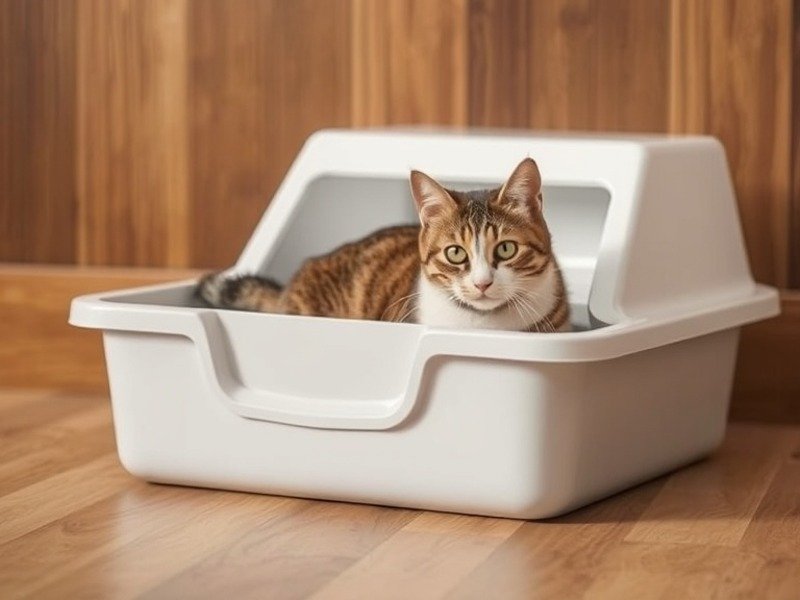Every cat owner knows the importance of a clean and inviting litter box. It’s the cornerstone of a happy and healthy feline companion. But what happens when you have more than one cat? How many litter boxes do you really need to keep your furry friends content and your home smelling fresh?
Understanding the Cat’s Bathroom Needs
Cats, unlike dogs, are meticulous about their bathroom habits. They have specific preferences when it comes to litter box cleanliness, location, and even the type of litter used. A cat might refuse to use a litter box if it’s not clean enough, if it’s located in a noisy or busy area, or if the litter is too coarse or dusty.
A Case Study: Whiskers’ Litter Box Preferences
Whiskers, a 5-year-old Maine Coon, was a notoriously picky cat when it came to his litter box. His owner, David, describes Whiskers as “a bit of a neat freak.”
“Whiskers always used his litter box, but only if it was spotless,” David says. “He’d refuse to go near it if it was even slightly dirty. I had to scoop his litter box several times a day to keep him happy.”
The Importance of Litter Box Number
The general rule of thumb is to have one litter box per cat, plus one extra. This means that if you have two cats, you should have three litter boxes. This might seem like a lot, but it’s crucial for maintaining a clean and comfortable environment for your cats, and for preventing accidents outside the litter box.
Why Multiple Litter Boxes?
- Cleanliness: Cats are fastidious creatures and prefer a clean litter box. Multiple litter boxes make it easier to keep them clean, reducing the chances of your cats refusing to use them.
- Privacy: Cats are often territorial and prefer to have their own space. Multiple litter boxes provide each cat with a private area for their bathroom needs, reducing the risk of conflict or territorial disputes.
- Accessibility: If your cats have to travel far to reach the litter box, they may choose to go elsewhere, especially if they’re in a hurry. Having litter boxes in multiple locations ensures that there’s always a convenient option nearby.
The Case of the Multi-Cat Household
Imagine a household with two cats. Both cats have the same litter box preferences: they prefer a certain type of clay litter, a private location, and the box to be scooped at least twice a day. With only one litter box, there’s a higher chance of conflict, especially if one cat doesn’t like the box’s current condition. This could lead to accidents outside the box.
By having two litter boxes in separate, convenient locations, both cats can have their needs met, reducing the risk of conflict and accidents.
Factors to Consider When Determining Litter Box Number
- Number of Cats: The most crucial factor is the number of cats in your home. As a general rule, you should have one litter box per cat plus one extra.
- Space: Consider the size of your home and the available space for litter boxes. Make sure that the boxes are strategically placed in convenient locations, allowing easy access for all cats.
- Cat Personality: Some cats are more particular than others when it comes to litter boxes. If you have a particularly picky cat, you might need more litter boxes to ensure they’re content.
- Activity Level: If your cats are very active or spend a lot of time outside the litter box, you may need more litter boxes to prevent accidents.
Tips for Maintaining Litter Box Hygiene
- Scoop Daily: Scoop out any clumps or solid waste at least once a day, ideally more often if you have multiple cats.
- Replace Litter: Replace the entire litter box with fresh litter every 1-2 weeks, depending on the type of litter.
- Clean Regularly: Wash the litter box with soap and water at least once a month.
- Use the Right Litter: Experiment with different litter types to find one that your cats prefer. Consider factors like texture, scent, and dust level.
Conclusion:
The number of litter boxes needed for your household depends on the number of cats, the available space, and your cat’s individual preferences. The general rule of thumb is to have one litter box per cat plus one extra. By providing your cats with ample litter box options, you can ensure their comfort, hygiene, and a happy, healthy relationship with their litter box.

Leave a Reply